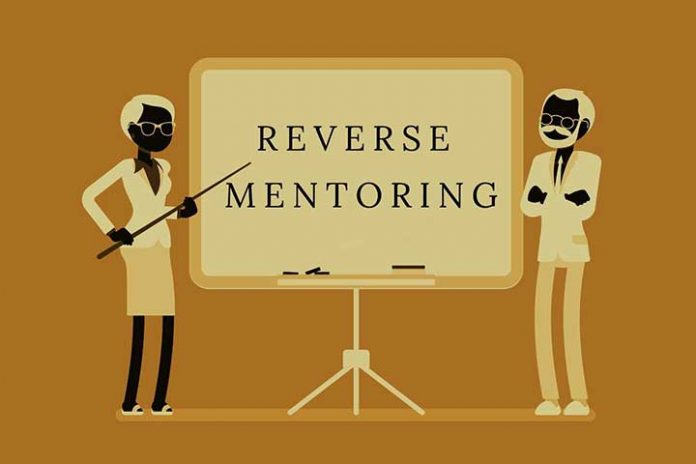There is a difference between “Mentoring” and “Reverse Mentoring”. In many companies , tutoring programs , or mentoring , are implemented that allow younger employees to learn from more experienced ones. Mentors enter into a relationship with their mentees during which they provide guidance and direction to these less experienced employees. They are often very successful, and mentoring programs improve talent retention , improve communication, and are a sign that the employer is making a long-term commitment to its employees.
The point is that not only does the apprentice benefit from the knowledge transmitted to him by his mentor: the latter also gains something valuable from the experience, and learns valuable knowledge. If we talk about reverse mentoring , we must say that it is a good complement to diversity. Through this reverse tutoring, senior employees incorporate some of the skills of young people, which makes it a very powerful tool to improve skills development, promote intergenerational learning and reinforce the inclusive culture.
It is quite possible that this concept has been around for longer than we might think, because you always learn something from your apprentices., but in this moment of today in which we are, with so many new technologies, with social media and associated tools, a reverse tutoring is much more beneficial for managers. Learning to use social media, understanding the importance of its use and how to take advantage of it within the communication strategy of the company is very valuable for a senior manager.
Combining his experience and vision with that knowledge about the need to adopt new ways of communicating, and learning about new trends means that employers, senior managers and any senior worker can better understand what drives younger employees and how to attract the best talent .
Keys to productive reverse mentoring
Considering reverse mentoring is beneficial for all employees, as we have seen, but it is necessary to fulfill at least three essential keys to the success of the program . In the same way that we design a mentoring program, the reverse program must fit the company and the people involved must have a positive attitude towards it.
Therefore, the first essential key is openness , the willingness of older employees to undergo a mentoring program by younger employees. This step can be difficult because it is not always possible to get a more experienced employee to “let it be taught” by the young person. But it is worth it because, as we have said, the benefits are huge for everyone.
A second key to success is to have regular meetings , for example every month. The periodicity allows to give a temporary continuity to the experience and to consolidate it among the workforce, at the same time improving that intergenerational communication and, in a certain way, empowering the youngest employees.
The third key is in the training of mentors. Having a training program for mentors is essential since we are facing a generation gap that should not be a barrier in itself. For this reason, within a reverse mentoring program, age should not dictate the leadership of the sessions, but it should be the mentor (in this case, the youngest person and in certain areas more inexperienced) who leads and communicates the objectives. openly, without qualms.

